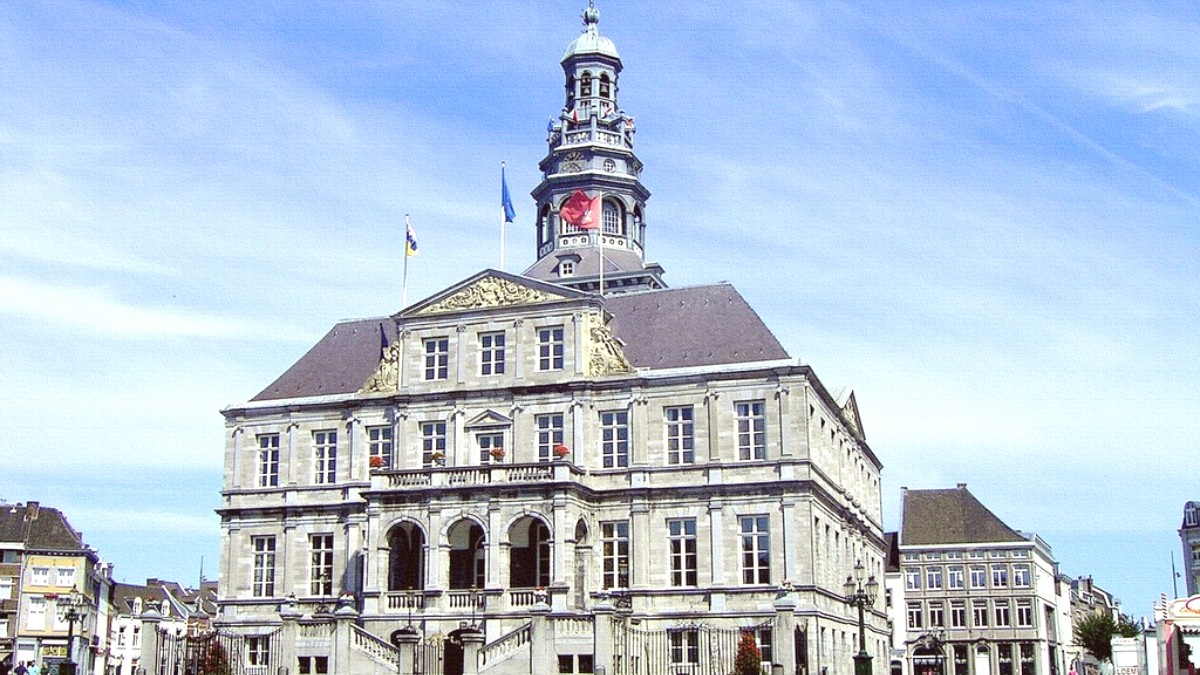
The Southeast, The Netherlands
Limburgian cuisine, notably in Maastricht, stands for its hearty, often rustic, and rich dishes. It draws heavily from the "Bourgondian" tradition, a lifestyle emphasizing enjoyment, especially through food and drink. This contrasts with the typically more functional and simpler fare found in other parts of the Netherlands. Maastricht's close ties to Belgium and France have led to culinary influences from these regions, resulting in richer sauces and more elaborate preparations.
Local produce, strong cheeses (like Limburger cheese), game meats (especially in autumn), and traditional stews form the backbone of the cuisine. A strong appreciation for sweet pastries and fruit tarts, known locally as vlaai, is prevalent. Butter, cream, and robust, flavorful sauces are common components, lending to the cuisine's richness.
For popular restaurants, especially on weekends or for dinner, making a reservation is recommended to secure a table.
Service in Dutch restaurants is generally efficient and polite but not overly intrusive. It is not rushed, permitting a relaxed dining experience.
Credit and debit cards are widely accepted. Some smaller establishments might prefer cash.
A traditional Limburgian stew, typically with beef, marinated in vinegar and spices, slow-cooked until tender. Sweetened with gingerbread or apple syrup, it offers an unique sweet-sour flavor. Served with fries or mashed potatoes.
Widely available in traditional 'eetcafés' (pubs serving food) and local restaurants.
A beloved traditional Limburgian pie. It features a sweet yeast dough base with various fillings like fresh fruits (cherry, apricot, plum), rice pudding, or curd cheese. A must-try dessert or coffee accompaniment.
Find authentic vlaai at local bakeries (e.g., Bakkerij Mathieu Hermans, Bisschopsmolen) and cafes.
A popular snack consisting of a large, seasoned meatball served in a soft bun, often accompanied by gravy or a dab of mustard. Simple, satisfying, and a common lunch item.
A quick and hearty choice for a casual bite.
Beyond frites, look for 'kroketten' (deep-fried meat ragout rolls) and 'frikandel' (a skinless, deep-fried sausage), popular Dutch snacks at snack bars.
During Carnival (February/March), specific pastries and celebratory snacks appear. Around Christmas, find 'speculaas' cookies (spiced shortcrust biscuits) and 'oliebollen' (deep-fried dough balls).
Vegetarian ('vegetarisch') and vegan options are increasingly available, especially in modern cafes, health-food restaurants, and many mid-range establishments. Many menus clearly mark these dishes.
Many restaurants gain more awareness of common allergies. Always inform staff clearly of any allergies. Use a phrase like "Ik heb een glutenallergie" (I have a gluten allergy).
Specific Halal or Kosher restaurants are limited. However, you can find specialty shops selling Halal or Kosher ingredients if self-catering.
Clearly state your dietary needs to staff before ordering. This includes allergies, intolerances, or preferences.
"Ik ben vegetarisch/veganistisch." (I am vegetarian/vegan.)
Utilize online forums and dedicated apps (like HappyCow) to find suitable dining spots before your visit.
Direct communication with establishments also proves beneficial.
Greater flexibility for dietary needs in larger, modern establishments.
Consider purchasing groceries from supermarkets for easier control over ingredients.
Learning a few basic Dutch phrases for dietary requirements aids communication.
When in doubt, politely ask the restaurant staff for clarification regarding ingredients.
Some local organizations or private chefs conduct workshops focusing on Limburgian cuisine, learning traditional dishes like Zoervleis or Limburgse vlaai.
Food tours, often walking or cycling tours, concentrate on local specialties, chocolate, or beer, guiding you to various tasting spots.
In the surrounding Limburg countryside, opportunities exist to visit fruit farms (spring for cherry blossoms, autumn for apple/pear picking). Some local cheese producers or vineyards also conduct tours and tastings.
Explore regional produce, taste local wines, and learn about agricultural traditions.
Food tours, often walking or cycling tours, concentrate on local specialties, chocolate, or beer, guiding you to various tasting spots.
In the surrounding Limburg countryside, opportunities exist to visit fruit farms, cheese producers, or vineyards for tours and tastings.
Some local organizations or private chefs conduct workshops focusing on Limburgian cuisine, learning traditional dishes like Zoervleis or Limburgse vlaai.
In the surrounding Limburg countryside, opportunities exist to visit fruit farms, specifically in spring for cherry blossoms or in autumn for apple and pear picking.
Some local cheese producers or vineyards also conduct tours and tastings, offering a delightful sensory experience.
Maastricht is home to several Michelin-starred and Bib Gourmand restaurants, mirroring its strong culinary tradition.
Reservations are essential for these exclusive dining experiences.
Many mid-range restaurants in the city center and Wyck district extend a wide range of cuisines, from traditional Limburgian to international.
Café Sjiek and Harry's are popular choices for a delightful evening.
Participate in cooking classes to master Limburgian specialties like vlaai or Zoervleis.
Visit local fruit farms, cheese producers, or vineyards for tours and tastings in the countryside.
Check local calendars for regional food and beer festivals, often in warmer months.
Maastricht’s culinary landscape is rich and diverse. Beyond the specific recommendations, many charming local cafes and international restaurants exist, each with its unique flair.